Amazing rugs, amazing spaces
I've had a bit of an obsession with rugs lately. Particularly oriental, moroccan, and kilim. They are just so effortlessly stylish and also have a story to tell in the patterns and colors.
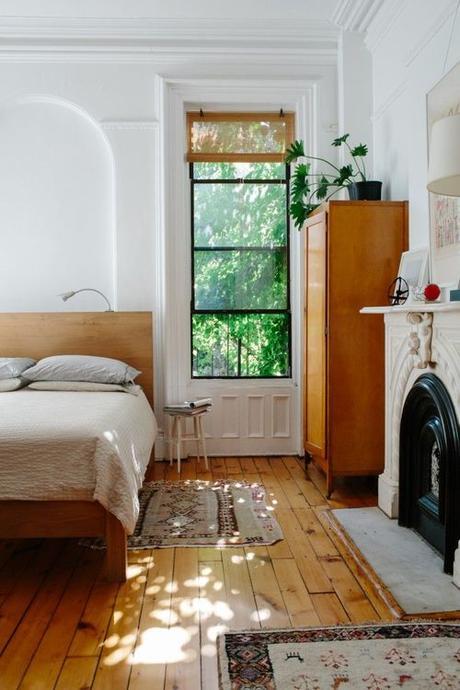 You wouldn't want to hide too much of those beautiful floors, so these accent rugs do just the trick.
You wouldn't want to hide too much of those beautiful floors, so these accent rugs do just the trick.via DISC Journal
Here are some handy definitions for you, I have trouble telling kilim, oriental, and moroccan rugs apart sometimes
Kilim Rug
Kilim, a word of Turkish origin, denotes a pileless textile of many uses produced by one of several flatweaving techniques that have a common or closely related heritage and are practiced in the geographical area that includes parts of Turkey (Anatolia and Thrace), North Africa, the Balkans, the Caucasus, Iran, Afghanistan, Pakistan, Central Asia and China. Although at times you may find kilim rugs included in the general genre of "oriental rugs", in more accepted practice kilims are in a class of their own. The major difference between a kilim area rug and a carpet or a pile rug is that whereas the design visible on a pile rugs is made by individual short strands of different color being knotted onto the warps and held together by pressing the wefts tightly, kilim designs are made by interweaving the variously colored wefts and warps, thus creating what is known as a flatweave. via
Oriental Rug
By the strictest definition, Oriental rugs are carpets hand knotted only in Asia. Iran, China, India, Russia, Turkey, Pakistan, Tibet and Nepal are some of the biggest rug exporters. Persian rugs also are Oriental rugs but they are made only in Iran (formerly known as Persia). Characteristics of a Persian rug include an unusually thick pile (up to 160 knots per square inch), extremely rich color combinations and unique designs, and a very distinct knot. Persian carpets are traditionally known for their tremendous variety in design, color, size, and weave. Moreover, they are known for the uniqueness of each and every rug produced. Rugs are generally named after the village, town or district where they are woven or collected, or by the weaving tribe in the case of nomadic pieces. via
Moroccan Rug
Moroccan rugs are the weaves, carpets, and textiles that have been traditionally hand-woven in Morocco. Rugs have been woven by the indigenous people of Morocco since the Paleolithic Era. Traditionally, Moroccan rugs have been woven by tribal peoples for their utility rather than for decorative purposes. Twentieth-century Moroccan rugs are widely collected in the West, and are almost always woven by tribes people who do not seek nor possess formal artistic training via
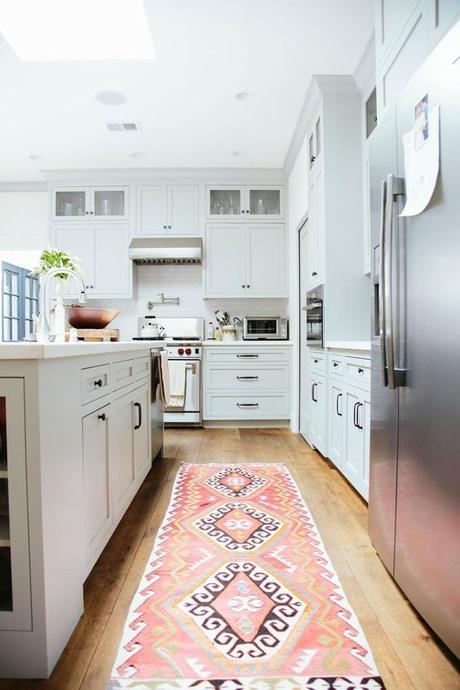 I'm really liking the options with pink and fuchsia in them. It makes the whole room feel fresher.
I'm really liking the options with pink and fuchsia in them. It makes the whole room feel fresher.via DecorPad
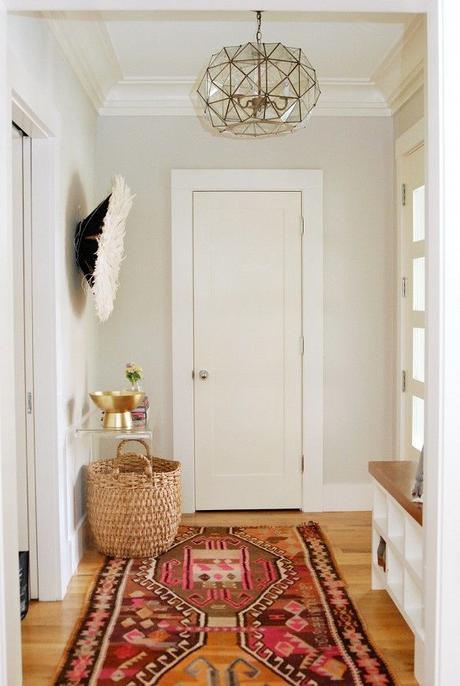 via Sarah Catherine Design
via Sarah Catherine Design
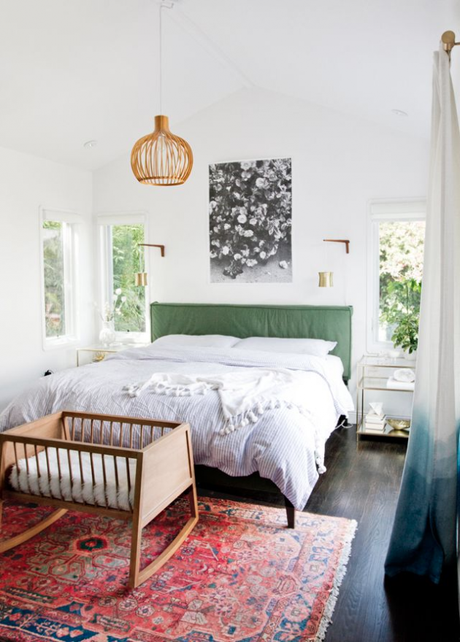 I have an oriental rug from Iran in our master bedroom, and whenever I take time to actually admire it, I'm always in awe of the colors.
I have an oriental rug from Iran in our master bedroom, and whenever I take time to actually admire it, I'm always in awe of the colors.via The Interior Collective
Beautiful as they are, the budget doesn't always allow for an authentic kilim, oriental, or moroccan. Luckily some rug manufacturers have tried to cash in on the trend by creating machine woven polyester rugs in similar patterns and colors. Does anyone here have one? I'd like to hear what you think.
Below are a few examples of "budget-friendly" oriental, kilim, and moroccan rugs.
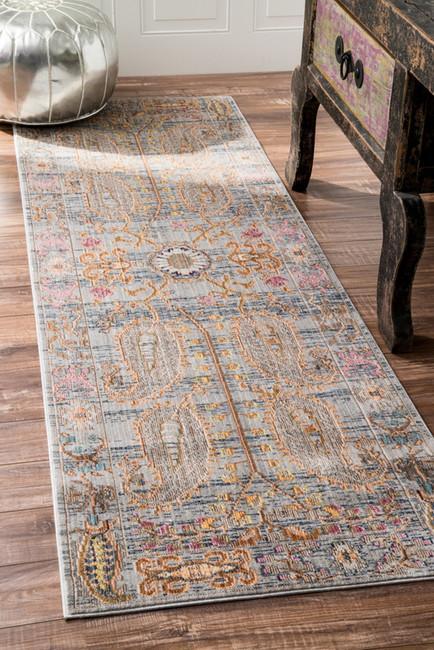 This rug costs from $99 to $249 depending on the size. I love the colors.
This rug costs from $99 to $249 depending on the size. I love the colors.Get it here
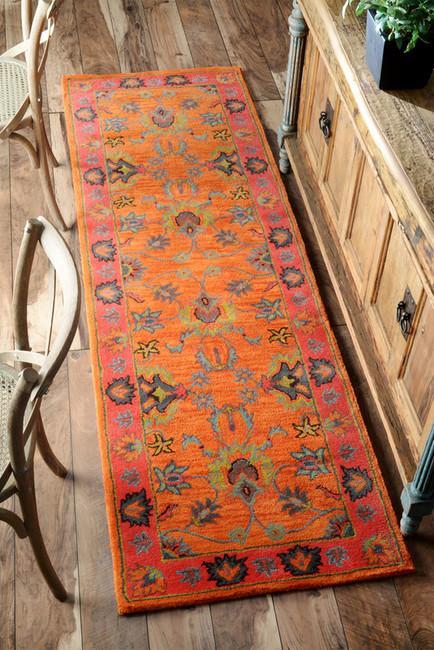 This one around $150.
This one around $150.Get it here
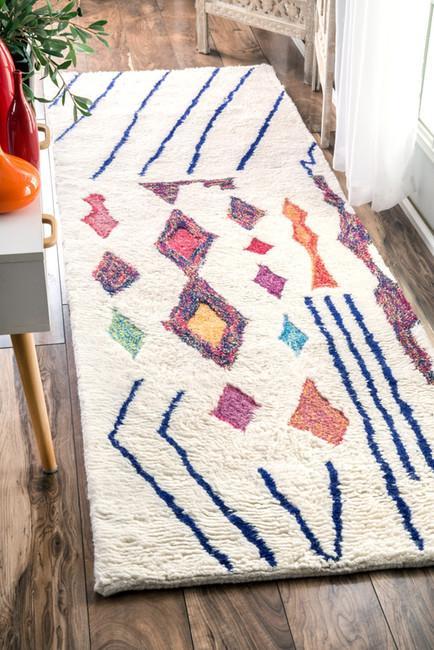
This moroccan style rug is hand knotted and ranges from $129 to $159
Get it here

